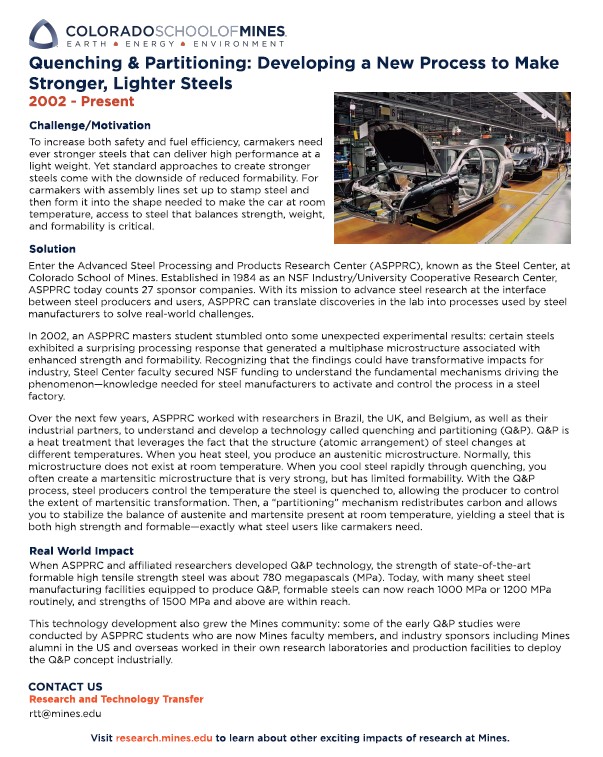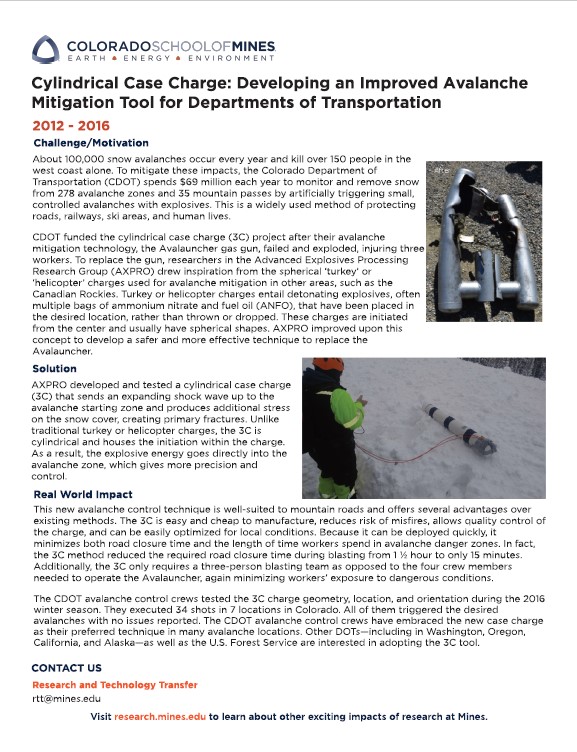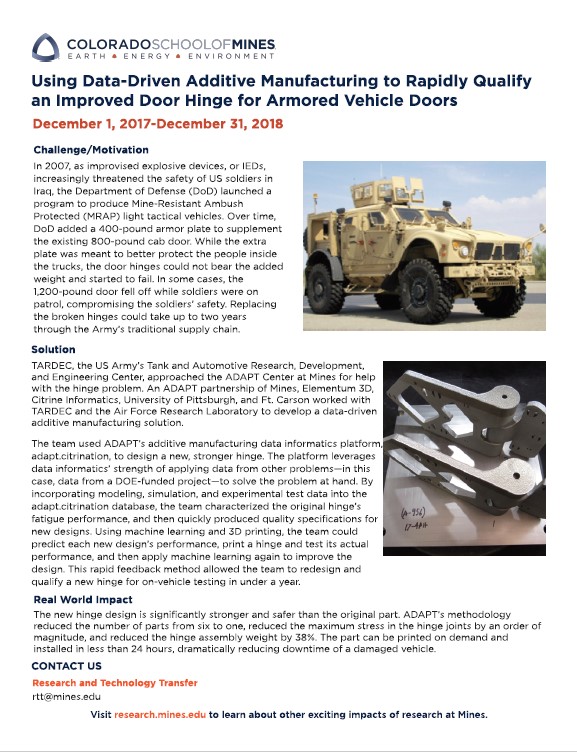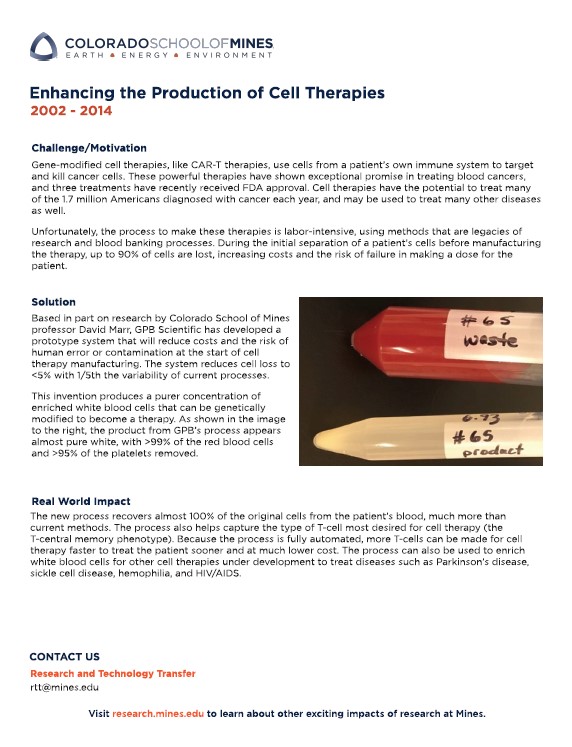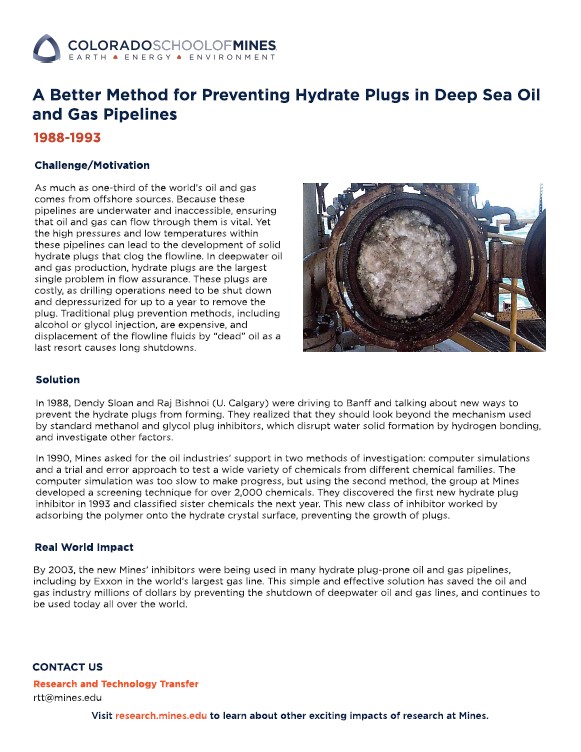Mines Innovation Success Stories
Success Stories
Quenching & Partitioning: Developing a New Process to Make Stronger, Lighter Steels
To increase both safety and fuel efficiency, carmakers need ever stronger steels that can deliver high performance at a light weight. Yet standard approaches to create stronger steels come with the downside of reduced formability. For carmakers with assembly lines set up to stamp steel and then form it into the shape needed to make the car at room temperature, access to steel that balances strength, weight, and formability is critical.
Enter the Advanced Steel Processing and Products Research Center (ASPPRC), known as the Steel Center, at Colorado School of Mines. Established in 1984 as an NSF Industry/University Cooperative Research Center, ASPPRC today counts 27 sponsor companies. With its mission to advance steel research at the interface between steel producers and users, ASPPRC can translate discoveries in the lab into processes used by steel manufacturers to solve real-world challenges. Read more »
Cylindrical Case Charge: Developing an Improved Avalanche Mitigation Tool for Departments of Transportation
About 100,000 snow avalanches occur every year and kill over 150 people in the west coast alone. To mitigate these impacts, the Colorado Department of Transportation (CDOT) spends $69 million each year to monitor and remove snow from 278 avalanche zones and 35 mountain passes by artificially triggering small, controlled avalanches with explosives.
CDOT funded the cylindrical case charge (3C) project after their avalanche mitigation technology, the Avalauncher gas gun, failed and exploded, injuring three workers. To replace the gun, researchers in the Advanced Explosives Processing Research Group (AXPRO) drew inspiration from the spherical “turkey” or “helicopter” charges used for avalanche mitigation in other areas, such as the Canadian Rockies. Read more »
Using Data-Driven Additive Manufacturing to Rapidly Qualify an Improved Door Hinge for Armored Vehicle Doors
In 2007, as improvised explosive devices, or IEDs, increasingly threatened the safety of US soldiers in Iraq, the Department of Defense (DoD) launched a program to produce Mine-Resistant Ambush Protected (MRAP) light tactical vehicles. Over time, DoD added a 400-pound armor plate to supplement the existing 800-pound cab door. While the extra plate was meant to better protect the people inside the trucks, the door hinges could not bear the added weight and started to fail. In some cases, the 1,200-pound door fell off while soldiers were on patrol, compromising the soldiers’ safety. Replacing the broken hinges could take up to two years through the Army’s traditional supply chain. Read more »
Enhancing the Production of Cell Therapies
Gene-modified therapies, like CAR-T therapies, use cells from a patient’s own immune system to target and kill cancer cells. These powerful therapies have shown exceptional promise in treating blood cancers, and three treatments have recently received FDA approval. Cell therapies have the potential to treat many of the 1.7 million Americans diagnosed with cancer each year, and may be used to treat many other diseases as well.
Unfortunately, the process to make these therapies is labor-intensive, using methods that are legacies of research and blood banking processes. During the initial separation of a patient’s cells before manufacturing the therapy, up to 90% of cells are lost, increasing costs and the risk of failure in making a dose for the patient.
Based in part on research by Mines professor David Marr, GPB Scientific has developed a prototype system that will reduce costs and the risk of human error or contamination at the start of cell therapy manufacturing. Read more »
A Better Method for Preventing Hydrate Plugs in Deep Sea Oil and Gas Pipelines
As much as one-third of the world’s oil and gas comes from offshore sources. Because these pipelines are underwater and inaccessible, ensuring that oil and gas can flow through them is vital. Yet the high pressures and low temperatures within these pipelines can lead to the development of solid hydrate plugs that clog the flowline. In deepwater oil and gas production, hydrate plugs are the largest single problem in flow assurance. These plugs are costly, as drilling operations need to be shut down and depressurized for up to a year to remove the plug. Traditional plug prevention methods, including alcohol or glycol injection, are expensive, and displacement of the flowline fluids by “dead” oil as a last resort causes long shutdowns.
In 1988, Dendy Sloan and Raj Bishnoi (U. Calgary) were driving to Banff and talking about new ways to prevent the hydrate plugs from forming. They realized that they should look beyond the mechanism used by standard methanol and glycol plug inhibitors, which disrupt water solid formation by hydrogen bonding, and investigate other factors. Read more »
Contact Us
Guggenheim Hall, Ste. 314
1500 Illinois St.
Golden, CO 80401
(303) 273-3327

Will Vaughan, PhD
Director, Technology Transfer
wvaughan@mines.edu
